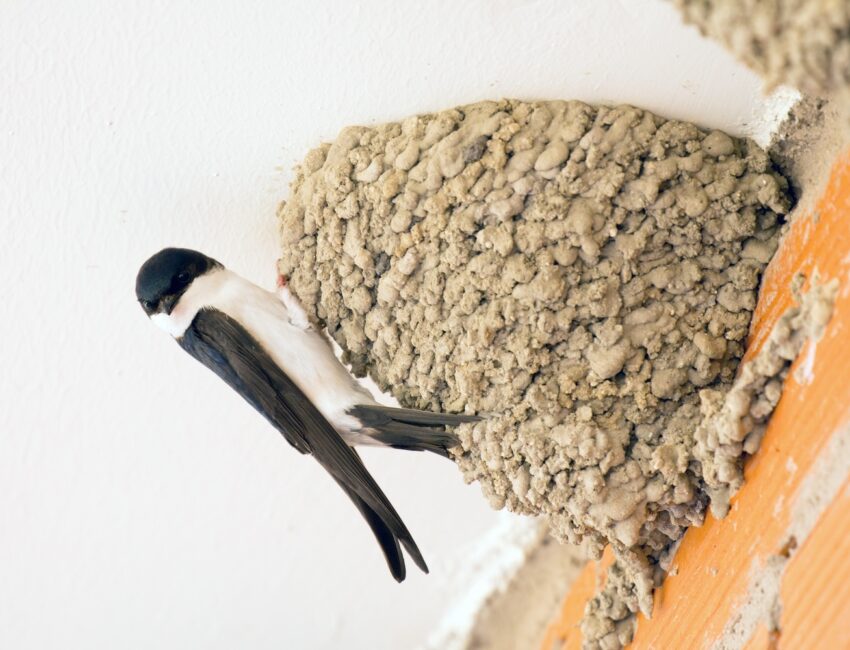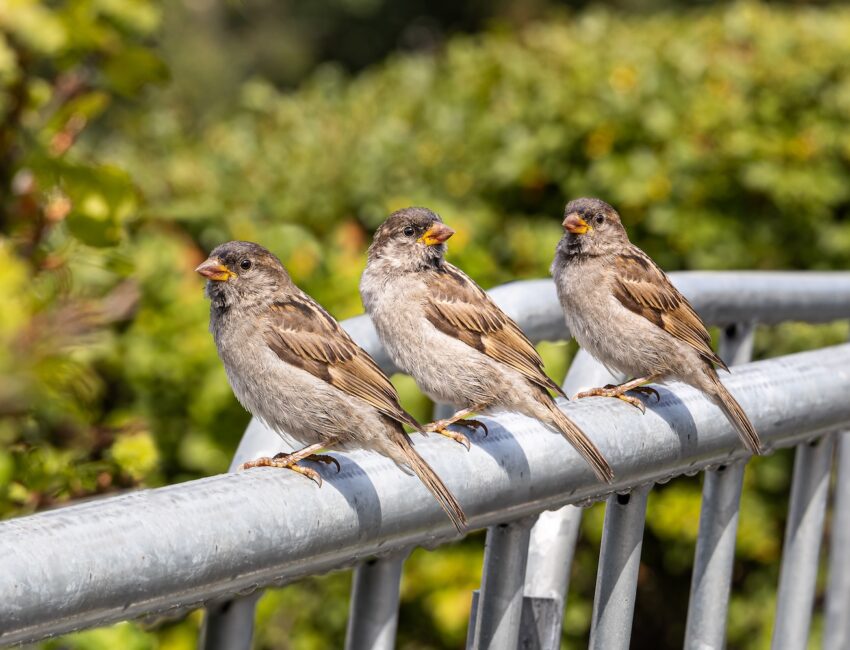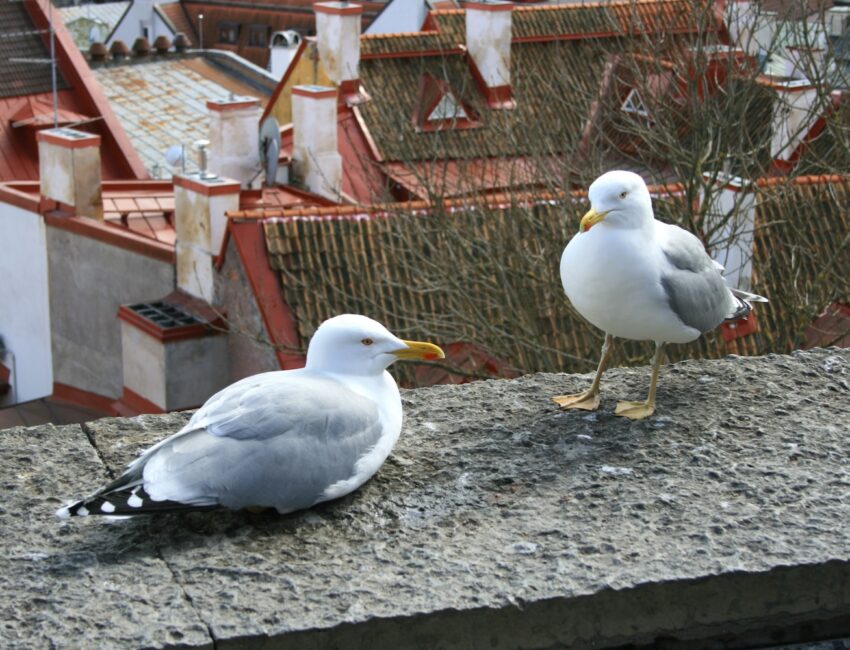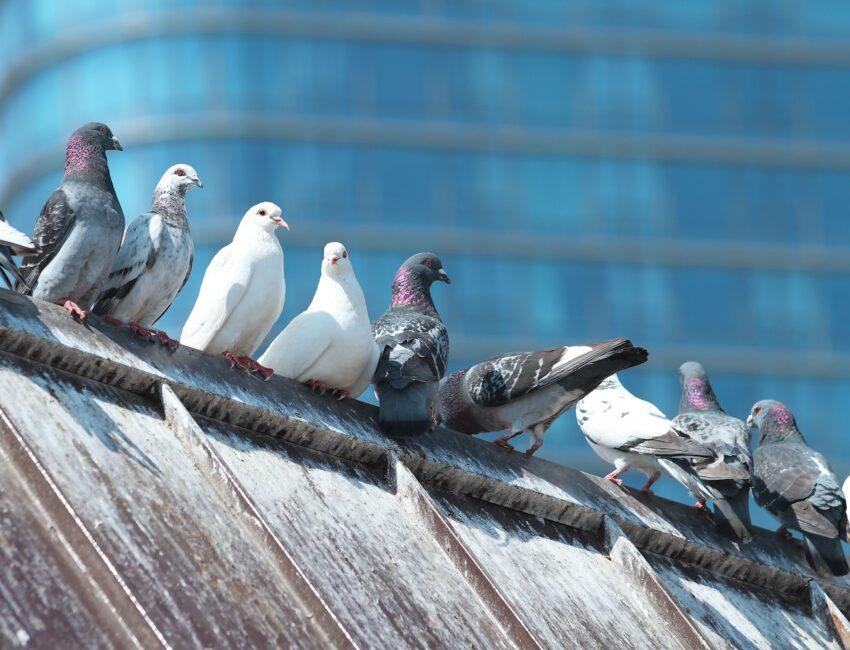Swallows
Swallows nest mainly in corners formed by the junction of a vertical wall and a roof (or similar) structure. They build the nests in the shape of a quarter-sphere from mud and pieces of grass or straw. The nest is reused for several years. A related species of the swallow is the house martin, which is slightly smaller than the barn swallow and has distinctly white belly coloring. The house martin also builds a quarter-spherical nest with a small entrance hole, but the nest is placed in contact with the “ceiling” structure. Both species are protected by law. To protect against barn swallows and house martins, the four-row spike or wire barriers are used to prevent nest building.
Check out our productsSparrows
The house sparrow and the tree sparrow often perch on the edges of gutters and soil the pavement below them. For nesting, they seek out various cavities in walls, building roofs, hollow trees and dense tree crowns. hey also occupy house martin nests. To protect gutters, spike barriers with fixing straps are used. The straps bend around the edge of the gutter, and for optimal support, it is advisable to also rivet or screw them in place.
Check out our productsPredators and seagulls
Predatory birds and gulls tend to perch on protruding flat surfaces, chimneys, and similar structures. Multi-row spike barriers effectively prevent these larger birds from landing and thus efficiently prevent the fouling that these birds often leave behind.
Check out our productsPigeons
Pigeons living in cities are just one species of pigeon. Unlike turtle doves, wood pigeons, or collared doves, city pigeons are not protected by law.
When nesting, pigeons produce a large volume of droppings and significantly foul the areas where they perch. They build their nests in various niches, on window sills, and on balconies. To protect against pigeons, spike, spiral, and wire barriers are successfully used. A specific type is the ridge wire barrier designed to protect roof ridges.
Check out our products


